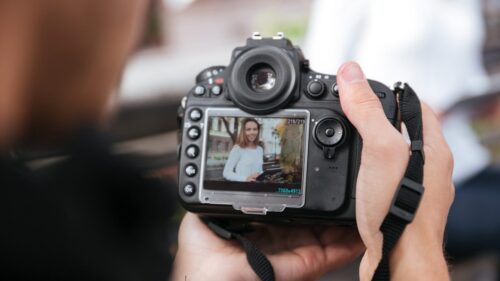Want to add a stylized, retro look to your footage? “Retro” was highlighted as one of the top visual trends to come in the Storyblocks 2020 Trends Guide. You can bring a nostalgic feeling to your videos by using different effects and pulling influence from the 70’s up to the early 2000s. In this tutorial, I’ll show you how to give your footage a retro look editing in Premiere Pro.
If you’re looking for footage or other video effects to use, head over to Storyblocks to browse their selection of stock footage, After Effects templates, graphics, and music to make your editing process quicker and easier.
Let’s get started!
1. In Premiere Pro, with the footage you’d like to add the retro look to on the timeline, go to the Project panel, click on the New Item icon and select Adjustment Layer. Drag this adjustment layer from your Project panel over top of your clip. You’ll apply effects to this adjustment layer rather than directly onto your clip so that you can quickly turn the adjustment layer on and off to compare the look of the original footage, to the added effects.
2. With the adjustment layer selected on your timeline, click the Window tab at the top of your screen and choose Color Lumetri. Open it so that you can adjust the color of the clip.
Since older cameras didn’t have the dynamic range that we’re used to seeing today, blow out the exposure of your footage a little bit by increasing it to 1.5. Older footage tends to have punchier contrast, so pump the contrast to around 30 to darken the shadows and brighten the highlights.
3. In the Lumetri Color panel, under the Creative tab, bring Faded Film to 70 to give your footage a dull, washed-out look. Older footage compared to HD footage, isn’t as sharp, or as vibrant, so decrease Sharpen to -50 and decrease the Vibrance to -40.
4. Next, under the Vignette settings, adjust Amount to -1.5 and Feather to 100, which will subtly darken the edges of our footage.
5. Next, in the Effects panel, search for the Noise effect and drag it onto the adjustment layer. Now, go to the Effect Controls panel and set the noise to 20% or to taste, based on how much grain you’d like to add into the footage.
6. Let’s next re-create a warping effect that sometimes appears on VHS tapes by searching for the Wave Warp effect in the Effects panel. Drag this effect onto your adjustment layer and go over to the Effect Controls panel to adjust the Wave Warp effect. Adjust the Wave Type to Square. Bring Wave Width to 1000. Change the direction to 0 so that the line shows horizontally. Adjust the Wave Speed to -0.1, click on the Pinning dropdown menu and choose All Edges, so you don’t see any of the black edges on the sides of your clip.
7. Next, search for the Ramp effect inside the Effects panel and drag it onto your adjustment layer. This effect allows us to create a gradient. We’re going to add a warm orange overlay to this clip to give it a 70’s vibe. Click on the Start Color box that shows the color on the top half of the gradient and pick an orange hue. Keep the bottom color white. Let’s now adjust the Blend With Original setting to around 80% so we can see the clip through the gradient.
8. Open the Essential Graphics window, choose the Type tool, click on your Program Monitor, and type a date. I recommend you find a retro style, commercial use, free font like VCR OSD Mono to really emphasize that retro feel.
9. Use your Selection tool to adjust the position of your text to the bottom right of your Program Monitor. Next, bring the text layer that was created on your timeline, underneath your adjustment layer so that the effects on the adjustment layer also affect the text layer.
10. And lastly, to finish the retro feel, let’s remove some of the frames from the clip. To do this, search for Posterize Time in the Effects panel and add it to the adjustment layer. In the Effect Controls panel, change the frame rate to 16 within the Posterize effect.
And there you go, that’s how you create a retro look in Premiere Pro using several different customized effects. If you’re looking to give a nostalgic, old school vibe in your videos, this is the way to do it. To learn more about this look, check out the 2020 Trends Guide and browse this toolkit for recreating the visual trends of 2020.
Want to see more from Alli Saunders? Look for new tutorials to come on the Storyblocks blog or follow Alli and Will on YouTube and Instagram.



